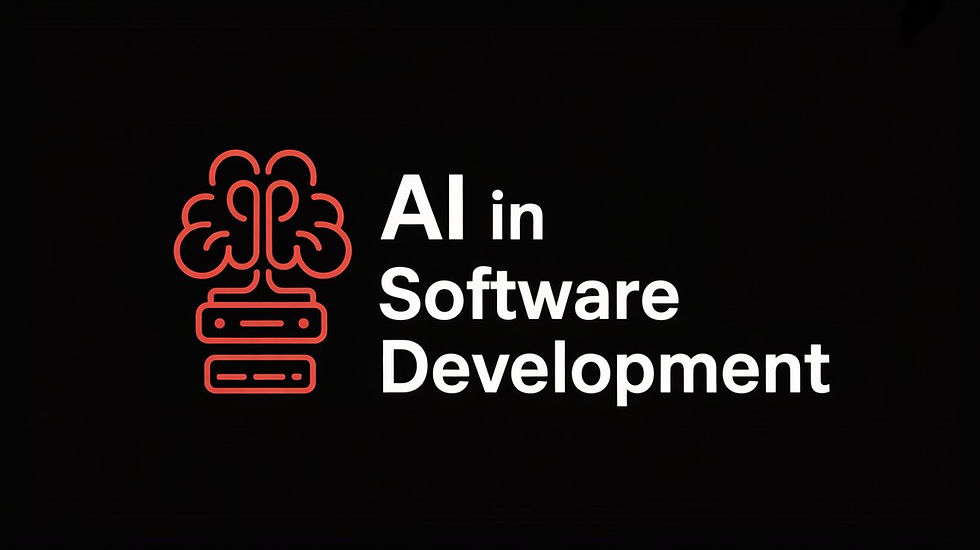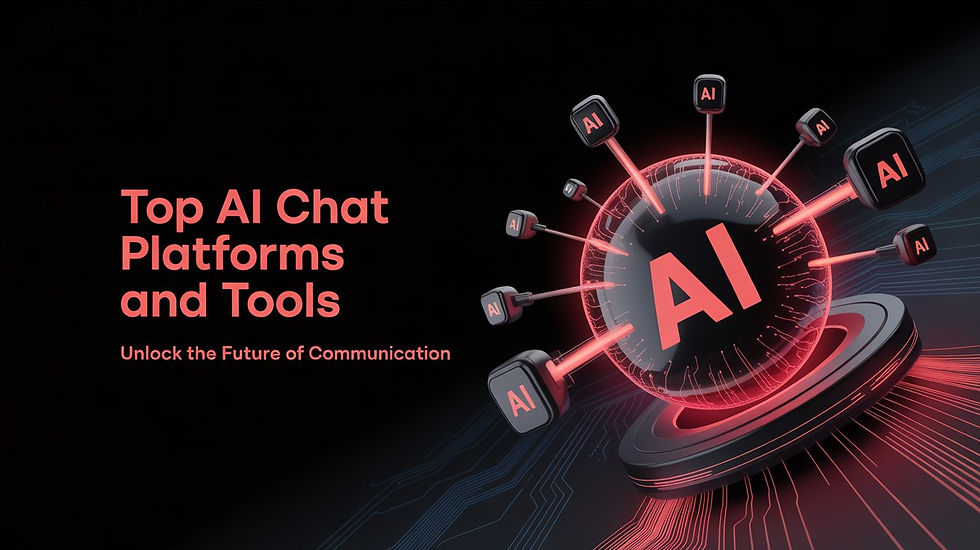AI Automation in Logistics: 2025 Trends and Insights
- pengarhehe
- May 21
- 7 min read

AI Automation in Logistics
AI automation in logistics is likely revolutionizing supply chain management by enhancing efficiency, reducing costs, and improving customer satisfaction.
Research suggests significant benefits, including up to 30% inventory reduction and 20% lower logistics costs, based on recent industry reports.
The topic is generally non-controversial, focusing on technological advancements, though challenges like data quality and implementation costs may spark debate among businesses.
The article aims to provide actionable insights for B2B audiences, with a focus on practical applications and strategic implementation.
Why AI Automation Matters for Logistics
In 2025, AI automation is transforming the logistics industry by streamlining operations and addressing challenges like rising costs and supply chain disruptions. By leveraging technologies such as machine learning and predictive analytics, businesses can optimize processes, from inventory management to route planning, to stay competitive in a fast-evolving market.
Benefits of AI in Logistics
AI automation offers substantial benefits, including cost savings, improved efficiency, and enhanced customer experiences. For instance, companies like Amazon and DHL have reported significant reductions in operational costs and delivery times, making AI a critical tool for logistics professionals aiming to boost profitability and service quality.
How to Get Started
Businesses can begin by assessing their needs, selecting appropriate AI tools, and partnering with providers to implement solutions. Tools like Make can help automate workflows, ensuring seamless integration into existing systems.

Guide to AI Automation in Logistics for 2025
In 2025, the logistics industry is experiencing a seismic shift driven by artificial intelligence (AI) automation. As global supply chains face increasing complexity, AI technologies are enabling businesses to optimize operations, reduce costs, and deliver superior customer experiences. This article provides an in-depth exploration of AI automation in logistics, covering its benefits, key technologies, use cases, real-world examples, challenges, and future trends. Designed for B2B audiences, this guide offers actionable insights to help logistics professionals harness AI to
transform their supply chains.
Market Overview: The Rise of AI in Logistics
The global AI in logistics market is projected to reach $20.8 billion in 2025, growing at a compound annual growth rate (CAGR) of 45.6% from 2020, according to DocShipper. This rapid growth reflects the increasing adoption of AI to address challenges such as labor shortages, rising fuel costs, and demand volatility. A 2025 report indicates that 78% of supply chain leaders report significant improvements with AI-powered solutions, while 67% of executives have fully or partially automated key processes using AI.
Benefits of AI Automation in Logistics
AI automation delivers transformative benefits to logistics operations, making it a strategic priority for businesses aiming to stay competitive.
Cost Reduction: AI-driven solutions can significantly lower operational expenses. For example, Maersk reduced vessel downtime by 30%, saving $300 million annually and cutting carbon emissions by 1.5 million tons. Similarly, Amazon’s use of 520,000 warehouse robots has led to a 20% cost reduction and a 40% increase in order processing efficiency.
Efficiency Improvement: AI optimizes processes like route planning and inventory management. UPS’s ORION system performs 30,000 route optimizations per minute, saving 38 million liters of fuel annually. This efficiency translates to faster deliveries and reduced operational bottlenecks.
Enhanced Customer Satisfaction: AI improves delivery accuracy and speed, enhancing customer experiences. DHL, for instance, reduced delivery times by 25% with AI-driven predictive analytics, achieving 95% prediction accuracy and saving 10 million delivery miles.
Sustainability: AI contributes to greener logistics by optimizing routes and reducing fuel consumption. UPS’s AI initiatives have prevented 100,000 tons of CO2 emissions, aligning with global sustainability goals.

Key Technologies Driving AI in Logistics
Several AI technologies are powering the transformation of logistics operations in 2025:
Machine Learning: Machine learning algorithms analyze vast datasets to predict demand, optimize routes, and improve inventory management. For example, Unilever uses machine learning to achieve 92% forecast accuracy, saving €300 million in inventory costs.
Predictive Analytics: This technology forecasts demand fluctuations and equipment failures. The Port of Rotterdam uses predictive analytics to achieve 95% accuracy in maintenance predictions, saving €31 million annually.
Computer Vision: Used for damage detection and visual inspections, computer vision enhances quality control. Google Cloud’s Visual Inspection AI improves accuracy by 10x, requiring fewer labeled images for training.
Autonomous Vehicles: Self-driving trucks and drones reduce reliance on human drivers. Tesla’s Semi offers a 500-mile range and fast-charging capabilities, reducing costs and emissions.
Robotics: Warehouse robots automate picking, packing, and sorting. Amazon’s 200,000 robots manage high order volumes, improving efficiency during peak seasons.
Top Use Cases of AI in Logistics
AI automation is applied across various logistics functions, delivering measurable results. Below are the top use cases, supported by real-world examples:
Demand Forecasting:
Description: AI integrates real-time and historical data to predict customer demand, accounting for seasonal patterns and market trends.
Benefits: Reduces inventory costs by up to 30%, minimizes stock-outs, and enhances customer satisfaction.
Example: Coca-Cola achieved 85% forecast accuracy, reducing inventory by 30% and saving €250 million annually.
Inventory Management:
Description: AI optimizes stock levels and automates reordering processes, ensuring efficient inventory turnover.
Benefits: Reduces inventory costs by 35% and improves in-stock rates. Walmart, for example, reduced inventory costs by $1.5 billion with 99.2% in-stock rates.
Tool: Tools like Make can automate inventory workflows, integrating with existing systems for seamless operations.
Route Optimization:
Description: AI uses shortest-path algorithms to determine efficient delivery routes, reducing shipping costs and delivery times.
Benefits: Saves fuel and reduces carbon emissions. UPS’s ORION system optimizes 30,000 routes per minute, saving 38 million liters of fuel.
Example: Valerann’s Smart Road System enhances route efficiency and safety, reducing congestion.
Warehouse Automation:
Description: AI-driven robots handle picking, packing, and sorting, improving order processing and accuracy.
Benefits: Increases efficiency by 40% and reduces labor costs. Amazon’s 520,000 robots achieve 99.8% picking accuracy.
Example: DHL’s 7,000 robots globally streamline warehouse operations, handling high-volume orders.
Predictive Maintenance:
Description: AI analyzes IoT sensor data to predict equipment failures, minimizing downtime.
Benefits: Reduces machine downtime by 20%-40% and extends machine life. FedEx saved $11 million with 22% cost savings and 78 hours of reduced downtime.
Example: Kuehne+Nagel analyzed 1.5 million scenarios, reducing maintenance costs by 15%.
Freight Management:
Description: AI matches shipments with carriers and optimizes freight rates, improving logistics efficiency.
Benefits: Reduces transportation costs by 15%. XPO achieved 99.7% load matching accuracy, cutting costs by 15%.
Example: Maersk uses AI to optimize freight routes, enhancing delivery efficiency.
Customer Service Automation:
Description: AI-powered chatbots handle customer inquiries, improving response times and satisfaction.
Benefits: Reduces customer service costs and enhances user experience. Tools like LiveChat provide AI-driven customer support solutions.
Example: Companies using AI chatbots report a 25% reduction in customer service response times.

Real-World Case Studies
The following case studies highlight how leading companies are leveraging AI automation in logistics:
Amazon: Utilizes 520,000 robots and AI for customer purchase prediction, delivery route optimization, and warehouse efficiency. This has resulted in a 20% cost reduction, 40% increase in order processing, and 99.8% picking accuracy.
DHL: Employs over 7,000 robots and AI for orchestration and predictive analytics, reducing delivery times by 25%, achieving 95% prediction accuracy, and saving 10 million delivery miles.
Maersk: Uses AI for predictive maintenance and route optimization, decreasing vessel downtime by 30%, saving $300 million annually, and reducing carbon emissions by 1.5 million tons.
UPS: The ORION system optimizes 30,000 routes per minute, saving 38 million liters of fuel and preventing 100,000 tons of CO2 emissions.
Walmart: AI-driven inventory management reduced costs by $1.5 billion, achieving 99.2% in-stock rates by analyzing over 200 variables per product.
Challenges and Solutions in Implementing AI
While AI offers significant benefits, businesses face several challenges in adoption:
Data Quality: Poor data quality can hinder AI performance. Solution: Invest in data cleaning and standardization to ensure accurate inputs.
High Costs: Implementation costs range from $500,000 to $2.5 million, with 62% of projects exceeding budgets. Solution: Start with pilot projects and scale gradually, or partner with providers like AppInventiv for cost-effective solutions.
Workforce Resistance: 72% of employees resist AI adoption due to skill gaps. Solution: Implement training programs and change management strategies to ease transitions.
Ethical Concerns: AI raises concerns about job displacement and data privacy. Solution: Adopt transparent AI policies and prioritize ethical AI development.
Future Trends in AI for Logistics
Looking ahead, several trends are shaping the future of AI in logistics:
Autonomous Vehicles and Drones: The adoption of self-driving trucks and delivery drones, like Tesla’s Semi and DHL’s Wingcopter, will increase, reducing costs and improving delivery to remote areas.
Advanced Predictive Analytics: Enhanced analytics will improve forecasting accuracy, with companies like Lenovo achieving 2.3% market share gains through AI-driven insights.
Blockchain Integration: Combining AI with blockchain will enhance supply chain transparency and security, particularly for cross-border logistics.
Sustainability Initiatives: AI will drive greener logistics, with initiatives like UPS’s fuel-saving programs setting the standard for eco-friendly operations.
How to Get Started with AI in Logistics
Businesses looking to implement AI automation in logistics can follow these steps:
Assess Needs: Identify pain points in your supply chain, such as high inventory costs or inefficient routes.
Select Tools: Choose AI platforms like Make for workflow automation or LiveChat for customer service solutions.
Integrate Systems: Ensure AI tools integrate with existing ERP and CRM systems for seamless operations.
Pilot and Scale: Start with small-scale pilots to test ROI, then scale successful implementations.
Measure Success: Track metrics like cost savings, delivery times, and customer satisfaction to evaluate impact.
For businesses seeking to create AI-driven content for logistics marketing, tools like Copyspace can automate content creation, ensuring consistent and engaging communication.
FAQ
What is AI automation in logistics?
AI automation in logistics involves using artificial intelligence to streamline supply chain processes, such as inventory management, route optimization, and customer service, to enhance efficiency and reduce costs.
How does AI improve supply chain management?
AI improves supply chain management by providing real-time insights, optimizing routes, predicting demand, and automating repetitive tasks, leading to cost savings and improved service levels.
What are the benefits of AI in logistics?
Benefits include up to 30% inventory reduction, 20% lower logistics costs, enhanced customer satisfaction, and reduced carbon emissions, as demonstrated by companies like Amazon and UPS.
What are some examples of AI in logistics?
Examples include Amazon’s warehouse robots, UPS’s ORION route optimization, and DHL’s AI-driven delivery time reductions.
What challenges do companies face when implementing AI in logistics?
Challenges include high implementation costs, data quality issues, workforce resistance, and ethical concerns, which can be addressed through pilot projects, training, and ethical AI policies.
Conclusion
AI automation in logistics is reshaping the industry in 2025, offering unprecedented opportunities for cost savings, efficiency, and sustainability. By leveraging technologies like machine learning, predictive analytics, and robotics, businesses can optimize their supply chains and stay competitive. To explore more AI automation strategies, visit AIAutomationSpot for insights on tools and implementation. Start your AI journey today with platforms like Make to transform your logistics operations.








Comments